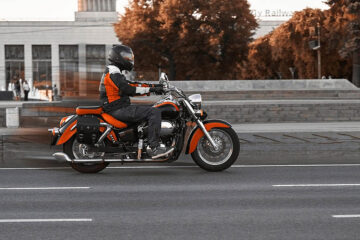Sports bike riding is a thrilling experience that requires precision, skill, and confidence. Whether you’re a novice rider or an experienced racer, there are always ways to refine your techniques and enhance your performance. In this guide, we’ll explore essential tips and techniques to help you improve your sports bike riding skills and get the most out of your ride.
1. Master the Basics
Before diving into advanced techniques, ensure you have a strong grasp of the basics. Mastering fundamental skills is crucial for improving your overall riding performance.
**1.1. Proper Riding Position
- Body Position: Maintain a balanced body position with your weight slightly forward. This helps with control and stability, especially during aggressive riding or cornering.
- Grip and Feet: Keep a firm but relaxed grip on the handlebars and ensure your feet are securely positioned on the footpegs. Avoid gripping too tightly, as it can affect your control.
**1.2. Throttle and Brake Control
- Smooth Throttle: Apply the throttle smoothly to avoid abrupt power delivery, which can unsettle the bike and affect your stability.
- Braking Techniques: Use both front and rear brakes for effective stopping power. Practice progressive braking to avoid locking up the wheels.
2. Enhance Your Cornering Skills
Cornering is a critical aspect of sports bike riding that requires precision and technique. Improving your cornering skills can significantly enhance your riding performance.
**2.1. Proper Cornering Technique
- Look Ahead: Focus on where you want to go, not just directly in front of you. This helps in planning your line and making smooth turns.
- Body Lean: Lean your body into the corner while keeping the bike upright. This helps with balance and stability during turns.
**2.2. Throttle Control in Corners
- Smooth Application: Apply the throttle smoothly as you exit the corner to maintain traction and avoid sudden power surges.
- Corner Exit: Gradually increase throttle as you straighten the bike out of the corner for a controlled exit.
3. Improve Your Braking Techniques
Effective braking is essential for safety and performance. Proper braking techniques can improve your control and confidence on the road or track.
**3.1. Advanced Braking Techniques
- Threshold Braking: Apply maximum braking force without locking the wheels. This technique helps in achieving the shortest stopping distance.
- Trail Braking: Gradually apply the brakes as you enter a corner. This technique allows for better corner entry and control.
**3.2. Emergency Braking Practice
- Simulate Emergency Stops: Practice emergency braking in a safe environment to familiarize yourself with your bike’s braking performance and improve reaction times.
4. Develop Your Riding Awareness
Awareness and anticipation are crucial for safe and effective riding. Developing these skills can help you respond better to changing conditions and potential hazards.
**4.1. Situational Awareness
- Scan the Road: Continuously scan the road for potential hazards, such as obstacles, other vehicles, and road conditions.
- Predictive Riding: Anticipate the actions of other road users and adjust your riding accordingly. This includes being aware of potential blind spots and adjusting your position.
**4.2. Practice Defensive Riding
- Maintain Safe Distances: Keep a safe distance from other vehicles to allow for adequate reaction time in case of sudden stops or emergencies.
- Use Mirrors Effectively: Regularly check your mirrors to stay aware of your surroundings and potential threats.
5. Optimize Your Bike Setup
A well-tuned bike can greatly enhance your riding experience. Ensure that your bike is properly set up and maintained for optimal performance.
**5.1. Suspension and Tire Setup
- Suspension Adjustment: Adjust your bike’s suspension settings according to your riding style and the type of terrain. Proper suspension setup improves handling and comfort.
- Tire Pressure: Maintain the correct tire pressure for your bike and riding conditions. Properly inflated tires ensure better grip and handling.
**5.2. Regular Maintenance
- Routine Checks: Regularly inspect your bike’s brakes, tires, and fluids to ensure they are in good condition.
- Service Intervals: Follow the manufacturer’s recommended service intervals for routine maintenance and parts replacement.
6. Invest in Rider Training
Formal rider training can provide valuable insights and techniques to improve your skills. Consider enrolling in advanced riding courses or track days to enhance your abilities.
**6.1. Advanced Riding Courses
- Track Days: Participate in track days to experience high-speed riding in a controlled environment. Track days offer opportunities to practice advanced techniques and receive feedback from experienced instructors.
- Rider Schools: Enroll in advanced rider schools that focus on specific skills such as cornering, braking, and throttle control.
**6.2. Feedback and Improvement
- Video Analysis: Use video analysis to review your riding technique and identify areas for improvement. Analyzing your performance can help you refine your skills.
7. Practice Regularly
Consistent practice is key to improving your sports bike riding skills. Regular riding and practice sessions help reinforce techniques and build confidence.
**7.1. Set Goals
- Practice Objectives: Set specific goals for each practice session, such as improving cornering or braking techniques. Focus on achieving these goals to track your progress.
**7.2. Varied Practice
- Different Conditions: Practice riding in various conditions, such as wet or uneven surfaces, to improve your adaptability and skill.
Conclusion
Improving your sports bike riding skills requires dedication, practice, and a willingness to learn. By mastering the basics, refining your cornering and braking techniques, enhancing your awareness, and optimizing your bike setup, you can elevate your riding performance and enjoy a more rewarding riding experience. Invest in rider training, practice regularly, and continuously seek ways to improve, and you’ll find yourself becoming a more skilled and confident sports bike rider.


